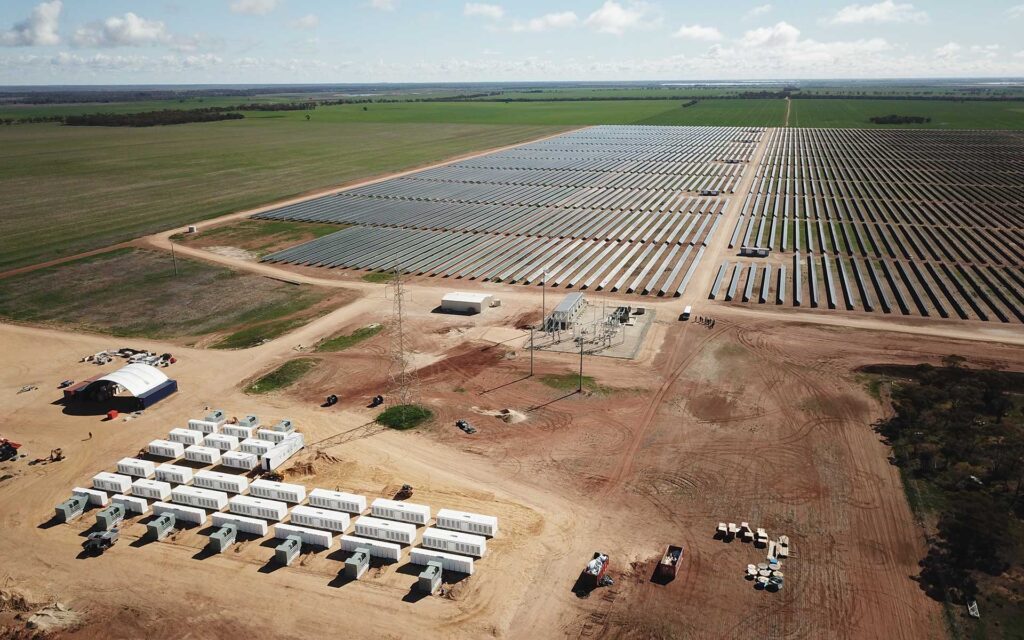
Photo: ARENA
A new solar battery storage trial at Bargara confirms the Bundaberg Region’s growing reputation as the clean energy capital of Australia.
Bundaberg Regional Council has approved nine solar farms over the past five years with potential generation capability of 574 MWh.
Already the nation’s rooftop solar capital, Energy Queensland’s battery project announced yesterday will bolster these credentials.
Bundaberg Regional Council’s Executive Director Strategic Projects and Economic Development, Ben Artup, said it’s exciting that a large-scale, network-connected battery trial will be going ahead locally.
“It’s great to see Energy Queensland investing in this type of trial. It will become business as usual in the future,” he said.
Premier Annastacia Palaszczuk said there will be five network-connected battery sites at Bargara, Hervey Bay, Townsville, Yeppoon and Toowoomba, collectively storing up to 40MWh.
Mayor Jack Dempsey said the Bargara solar battery project would enhance the Bundaberg Region’s national profile as a clean, green energy producer.
“It’s fantastic to see this trial going ahead at Bargara,” he said.
“The Bundaberg Region is the solar capital of Australia with more rooftop panels than anywhere else in Australia and increasing generation capacity from solar farms.
“The investment by Energy Queensland complements what Council is doing to encourage biofuels, hydrogen and other clean energy projects in the region.”
Ms Palaszczuk said because Queensland has one of the highest levels of rooftop solar uptake in the world, the government wants to manage renewable energy “in the right way” and keep up with demand.
“That’s why Energy Queensland will commence a battery storage trial across five locations in Queensland to support the continued uptake of renewables across the state,” she said.
“This will mean that the excess renewable energy generated by Queenslanders will be stored for sustainable use which includes capturing the low-cost renewable energy during the day to distribute into the market in the high-use peak periods.”
Energy Minister Mick de Brenni said batteries placed on the electricity networks throughout the state would assist in gaining the maximum advantage from Queensland’s abundant rooftop solar systems.
“This will mean using this huge source of renewable energy in a smarter way,” he said.
“In the medium term, this technology means we can bank the excess renewable energy generated allowing a continued growth in rooftop solar on the way to achieving Queensland’s renewable energy target.
“In addition, these network battery projects will provide economic benefits right across Queensland and will contribute to the state’s economic recovery from COVID-19.
“This storage will deliver benefits across both the transmission and distribution networks and will also offer increased opportunities for local manufacturing and civil works for local businesses.
“For example, some of the components, such as the switchgear, could be made locally and there will be opportunities for Queensland-based training and development.”
Mr de Brenni said Energy Queensland already had a proven delivery model for network-connected batteries, having installed a 4MW/8MWh Tesla battery at Bohle Plains in Townsville.
“Energy Queensland-owned sites have been identified for this trial where deployment can occur as quickly and efficiently as possible, and where we are seeing the highest penetration of solar on the network,” he said.
“If successful, Energy Queensland could deploy distribution batteries in locations right across the state.
“Right now, renewables make up approximately 20 per cent of Queensland’s energy mix, and that figure will more than double over the next decade as we aim for 50 per cent by 2030.
“An affordable, reliable energy supply underpins our economic plan for post-COVID recovery, and renewables will play a central role in that.”





With this new solar farm and more in the area can we expect this will lead to electricity prices dropping?
Couple of things missing here.
Where is the battery getting made?
Who is paying for the associated infrastructure?
How much is this battery going to cost taxpayers state and federal, and how much cost gets loaded to electricity consumers.
A couple of billion dollars worth of Queensland state and federally subsidised, Chinese made wind turbines, are currently producing a miserable 1% of our generation.
Add the cost of the additional spiders web of poles, steel, concrete, copper, aluminium, stainless steel, plastics, resins and distribution equipment.
All for only 1% of unreliable electricity atm.
Take the subsidies and certificates away and let them stand on their own.
The whole picture is a different picture.